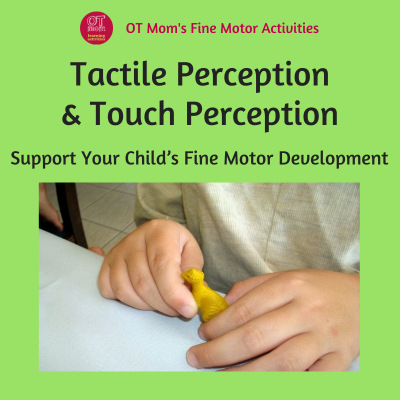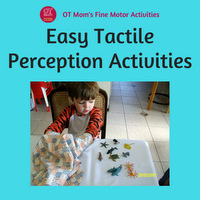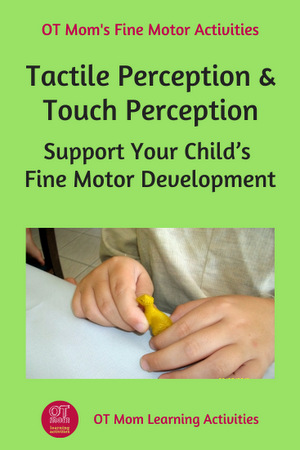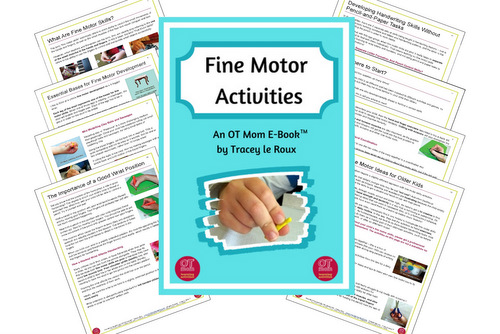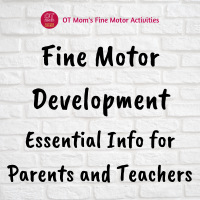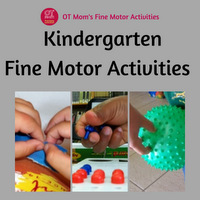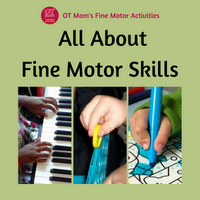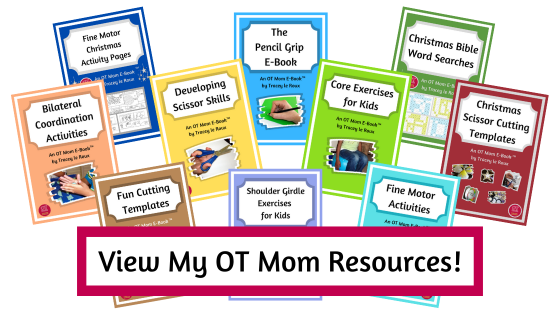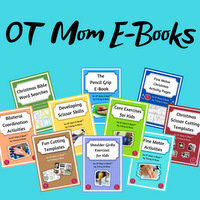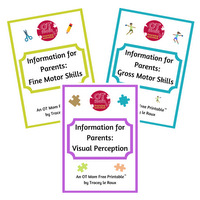- Home Page
- About Fine Motor Skills
- Tactile Perception
Tactile Perception and
Fine Motor Skills
This page explains how tactile perception relates to touch perception, haptic perception and tactile discrimination.
The hands are an important source of sensory information, and the brain uses this input to guide hand movements during activities. Children who struggle to interpret this sensory information may struggle to develop their fine motor skills. Find out how to support your child!
I sometimes link to products (#Ad) that are similar to those I use and love. If you do purchase something through my links, I will receive a small commission that helps support my site - thank you!
What is Touch, Haptic and Tactile Perception?
Using a variety of sensory receptors, the skin registers sensory information and sends it to the brain.
The brain then processes this information to correctly understand (perceive) what is being touched/held and how it is being used.
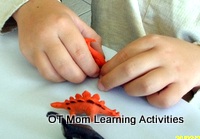
The terms touch
perception, tactile perception and haptic perception are often used
interchangeably by teachers and therapists, yet each has a distinct
meaning.
- Touch perception technically refers to the combination of tactile perception and haptic perception.
- Tactile perception is passive, where the skin simply makes contact with an object. It tells the brain where you are being touched, and the temperature, texture and hardness of the object.
- Haptic perception is active, where the object is actively explored and manipulated. The type of exploration depends on the object itself, as well as the child's age and abilities. Feedback from the muscles and joints (proprioception) enable the brain to perceive the shape, size and weight of the object, as well as the temperature, texture and hardness.
- Tactile discrimination is the ability to tell the difference between objects by touching and manipulating them, without looking at them.
Having good tactile perception and haptic perception can help a child use the hands effectively and helps to develop good fine motor skills.
Touch Perception in Real Life
When you shove your hand into your bulging handbag and fish around to retrieve your keys, your touch perception enables you to find your keys without looking.
Stop for a moment and think how it feels to wash the dishes or plant a seedling while wearing thick gloves.
The task is much more challenging because of the limited tactile feedback you are getting from your hands.
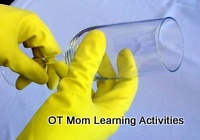
When you are not getting good sensory feedback from your fingers, it is hard to be accurate with them. You are more likely to be clumsy, and end up crushing the delicate plant roots or breaking the fragile crystal glass.
This can give you an idea of the struggles kids face when they have impaired touch perception. It's not that there's an issue with their hands; rather, the brain isn't processing the sensory information properly.
How Does Touch Perception Affect Fine Motor Skills?
The brain uses the sensory feedback from the hands to guide what the hands do and how they do it. If the brain struggles to perceive what is being held, or how tightly it is being held, this can affect how the child uses the hands.
- Children with poor touch perception may seem clumsy while holding small or fragile items. They may tend to hold items too tightly or too loosely, leading to accidentally dropping or breaking objects.
- They may also struggle to do buttons or tie shoelaces, or other daily tasks that use the hands without a lot of visual feedback.
- Poor touch perception can cause a child to use inappropriate pressure in their pencil grip.
- Handwriting speed and legibility have been found to be affected by touch perception. The brain needs to use the sensory information from the hands to control the pencil and form letters accurately.
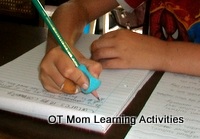
Tactile Perception and Sensory Processing
Remember, touch perception is about your brain understanding (perceiving) the sensory messages your hands send to your brain.
However if your child has sensory processing issues, this may affect the actual messages that are sent to the brain.
- For example, children who are tactile defensive may avoid exploring objects with the hands because of how the objects feel.
- Or they may refuse to engage in tactile activities which would have exposed them to a variety of tactile experiences. This, in turn, can affect their fine motor skills and pencil grip development.
- Children who are sensory seeking often seem to have reduced sensitivity to tactile and proprioceptive input. They may hold objects too tightly, or struggle to exert the appropriate amount of pressure on the pencil.
If your child seems to struggle with touch perception or sensory processing in any way, please do reach out to an occupational therapist who can help your child.
How You Can Help Your Child
There are lots of simple ways you can help your child develop functional touch perception skills! Try some today...
- Tactile Activities
Tactile activities provide kids with overall sensory experiences that enable them to explore their world through touch.
Here are some ideas for tactile activities:
- Outdoor play on grass and in sand are fantastic.
- Provide opportunities for "messy play" with sand, water and playdough.
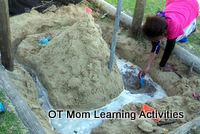 Outdoor play in sand
Outdoor play in sand- Hide a few of your child's toys in a container filled with sand, and encourage your child to find the toys by feeling for them. Other ideas for "sensory bins" include using beans or rice to hide the toys, but please watch out for choking with smaller kids.
- Let your child explore food textures with the hands as well as with the mouth. Let kids help you with food prep and with washing up afterward.
- Tactile Discrimination Activities
Tactile discrimination activities help kids learn to identify items by touching and feeling without looking at what the hands are doing.
These can help in developing the fine motor skills needed for daily tasks and for handwriting.
- Take a look at my simple and effective tactile discrimination activities that can be done at home or in hands-on classrooms.
- More Hands-On Play
Whether indoors or outdoors, your child's touch perception will benefit from grasping, moving and playing with real life objects instead of playing on a flat, smooth screen.
- Home Page
- About Fine Motor Skills
- Tactile Perception
Share this page to help others!
Improve Your Child's Fine Motor Skills Today!
For parents seeking practical activities to improve fine motor skills with everyday resources, check out my comprehensive e-book.
It offers step-by-step instructions and dozens of hands-on activities designed to support your child's development.
Discover a treasure trove of ideas to help your child develop fine motor skills through play!
Related Pages
References
Ballesteros S., Heller M.A. (2008) Haptic object identification. In: Grunwald M. (eds) Human Haptic Perception: Basics and Applications. Birkhäuser Basel. https://doi.org/10.1007/978-3-7643-7612-3_16
Cermak, S. ; Stilwell, J. (2006) ‘Perceptual Functions of the Hand’, in Henderson, A. & Pehoski, C. Hand Function in the Child: Foundations for Remediation. pp. 63-88. Boston: Mosby https://doi.org/10.1016/B978-0-323-03186-8.X5001-1
Lepora, N. Active Tactile Perception.
Scholarpedia, 10(3):32364, 2015 https://doi.org/10.4249/scholarpedia.32364
Yu, T-Y, Hinojosa, J., Howe, T-H., Voelbel, G. Contribution of Tactile and Kinesthetic Perceptions to Handwriting in Taiwanese Children in First and Second Grade. OTJR Occupation Participation Health 32(3):87-94, July 2012 https://doi.org/10.3928/15394492-20111209-02
Didn't find what you were looking for? Try a search of my site!
